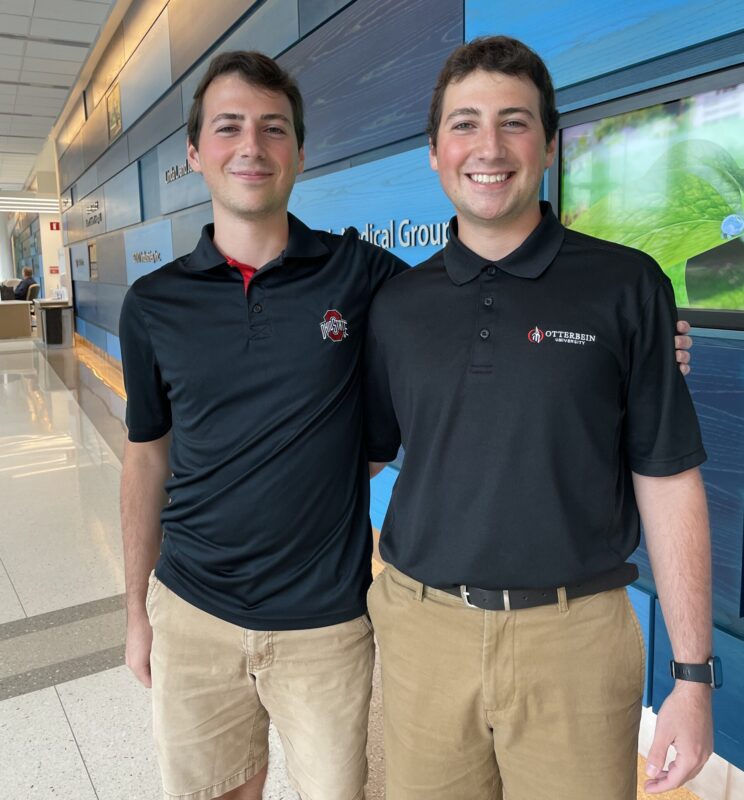
Twins Gabe and Drew Wherley, longtime patients of Dr. John Clark, both recently both underwent a procedure called cardioneuroablation in May with the goal of removing their pacemakers.
The year they turned 6, life took quite the turn for Gabe and Drew Wherley, identical twins from New Philadelphia, Ohio.
The twins were in kindergarten.
One day, Gabe had a seizure while at recess on his school’s playground.
“Seizures were frequent for me,” said Gabe, “but this one was different. I was out longer and it was more serious.”
His parents, Andrew and Carla, began to seek answers through their pediatrician and Gabe eventually was referred to Dr. John Clark, director of the Arrhythmia Center at Akron Children’s. Dr. Clark diagnosed Gabe with sinus node dysfunction.
“The sinus node is the heart’s normal pacemaker,” said Dr. Clark. “It decides it’s time for you to have a heartbeat and sends out an electrical signal that causes your heart to beat. But, in some people, the sinus node does not work perfectly.”
Dr. Clark recommended that Gabe receive a pacemaker.
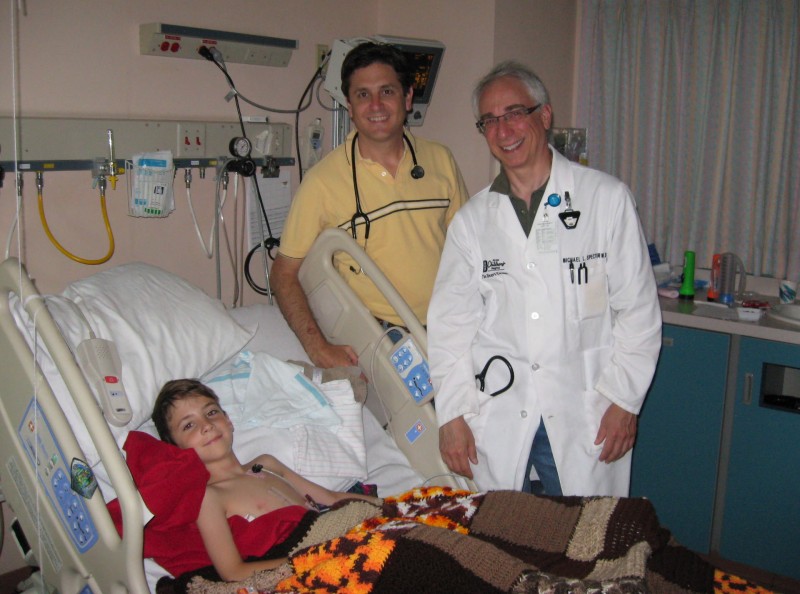
Gabe with Drs. John Clark and Michael Spector in June, 2008.
When Gabe was recovering from his surgery in Akron Children’s Pediatric Intensive Care Unit, Drew came to visit his brother – and fainted.
He was also diagnosed with sinus node dysfunction and received a pacemaker.
“This is exceptionally rare,” said Dr. Clark.
Even though they were very young, Gabe and Drew remember with clarity the places, times and details surrounding the events when their hearts stopped.
“It felt like time slowed down,” said Gabe.
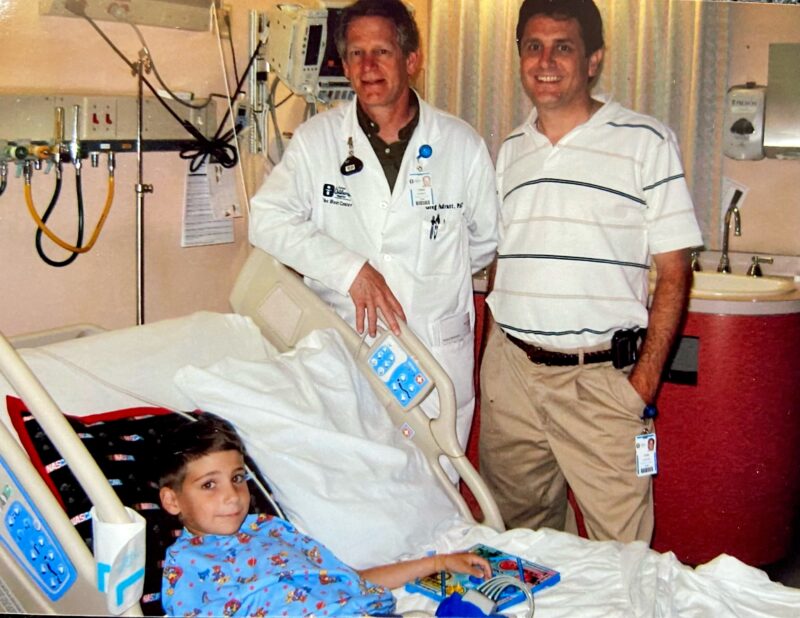
Drew with PA Greg Padrutt and Dr. John Clark in June 2008.
Growing up, the twins had regular appointments with Dr. Clark.
Drew had more complications. Initially, his body had trouble accepting the pacemaker. He developed fluid around the heart, which requires a heavy course of Prednisone and an immunoglobulin therapy.
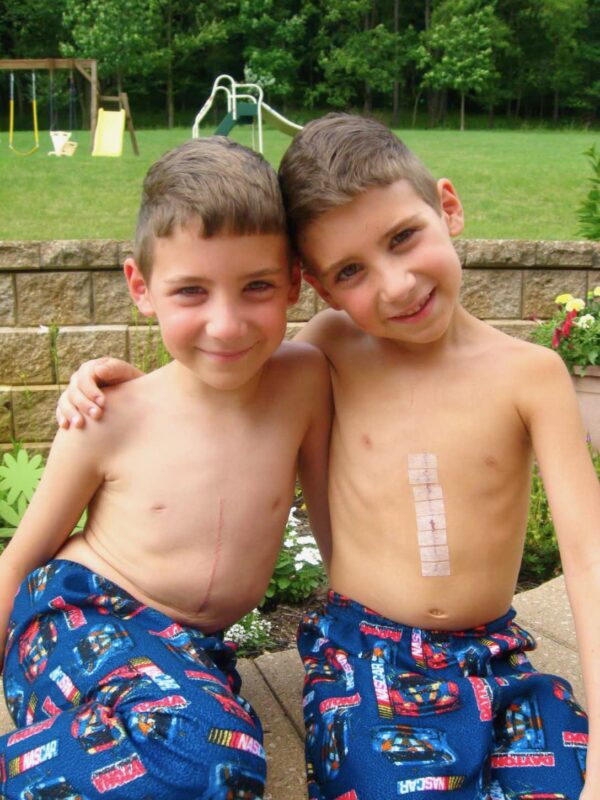
Following their surgeries in June 2008.
Carla homeschooled the boys for three years in elementary school out of an abundance of caution. Although they could not play contact sports, they excelled in golf and tennis.
Now 21, Gabe is studying civil engineering at Ohio State University and just sat for the law school entrance exam. Drew attends Otterbein College, also in Columbus, and is finishing up a summer internship in corporate tax accounting. He is also thinking about law school and, possibly a career in estate planning.
About a year ago, Dr. Clark told the twins about a new procedure that could address the underlying cause of sinus node dysfunction and possibly eliminate the need for their pacemakers.
Dr. Clark has made several trips to Brazil to learn more cardioneuroablation (CNA) and train with Dr. Jose Carlos Pachon, a pioneer in the field.
The new science is evolving from the first surgeries in the 1990s to address heart rhythm problems known as atrial fibrillation.
“What people noted is that, in certain areas, when they were trying to ablate the atrial fibrillation, it would alter the patient’s heartbeat,” said Dr. Clark.
It seemed logical then that similar techniques used in catheterization labs for fast and irregular heartbeats could be used to address slow heartbeats.
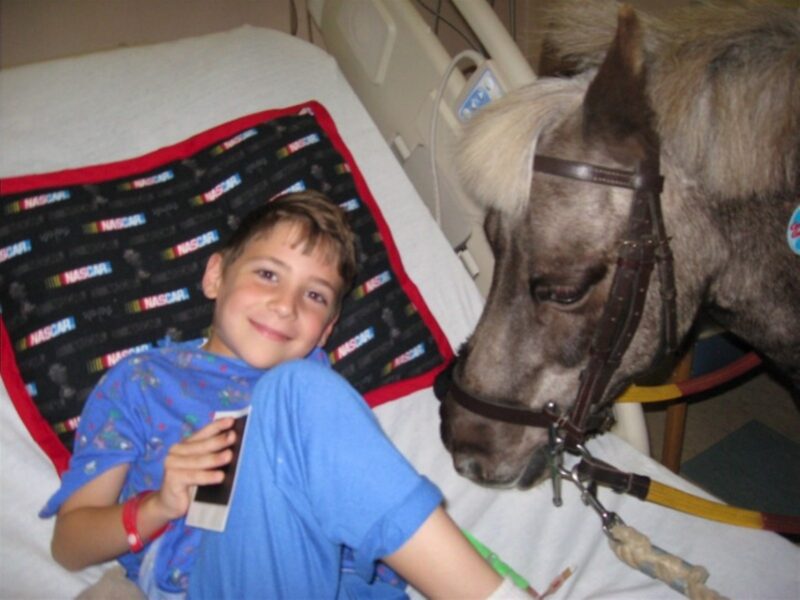
Petie the Pony paid Gabe a visit during one of his hospitalizations.
“We all have a nerve in our brain that tells our heart to slow down, said Dr. Clark. “But that nerve sometimes can send an inappropriate signal and the heart rate just stops. If it stops for more than a few seconds, you’re going to pass out. Where that nerve enters the heart is at very defined points in the heart and, in our cath lab, we can find those points and we can cauterize that area. That modifies the heart’s response to that nerve so the heart doesn’t stop. It just slows down.”
As Dr. Clark was learning about CNA, he was thinking that Gabe and Drew would be perfect candidates.
After a year of discussing the possibility that the procedure could help them remove their pacemakers, Dr. Clark performed CNA on Gabe and Drew within a week of each other in May.
Each twin was in the lab about 5 hours. A catheter – wire – run through the leg up to the neck allowed Dr. Clark to stimulate the vagus nerve and then he could watch the heart’s response – with pacemaker on and then turned off (working on its own after the CNA).
The plan is to turn off Gabe and Drew’s pacemakers next summer and, if all goes, well, remove them the following summer.
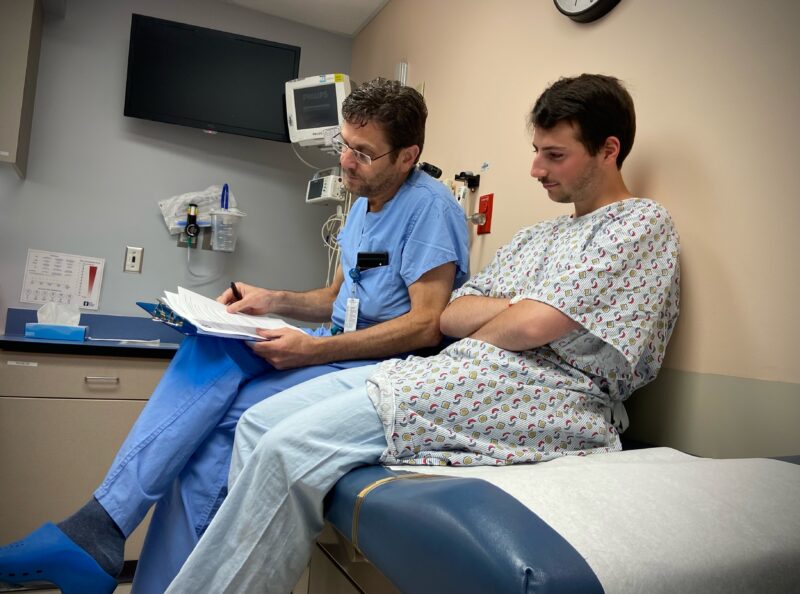
Gabe with Dr. Clark in May 2023, following his CNA procedure.
Dr. Clark said the pacemaker is a wonderful device and yet he would love to see all of his patients be able to live life without it.
“Even though it’s very helpful, keeps them from passing out and keeps their heart rate from ever going too slow, it’s still a device that their body is dependent on,” he said. “So, to rid them of that is a wonderful possibility.”
For as scary and, at times isolating, as it has been to be diagnosed with a serious heart problem at such a young age, having a twin brother experiencing the same was definitely a blessing for Gabe and Drew.
“I don’t know where I would have been without Gabe,” said Drew.
“I feel the same way,” Gabe said, literally without missing a beat.











